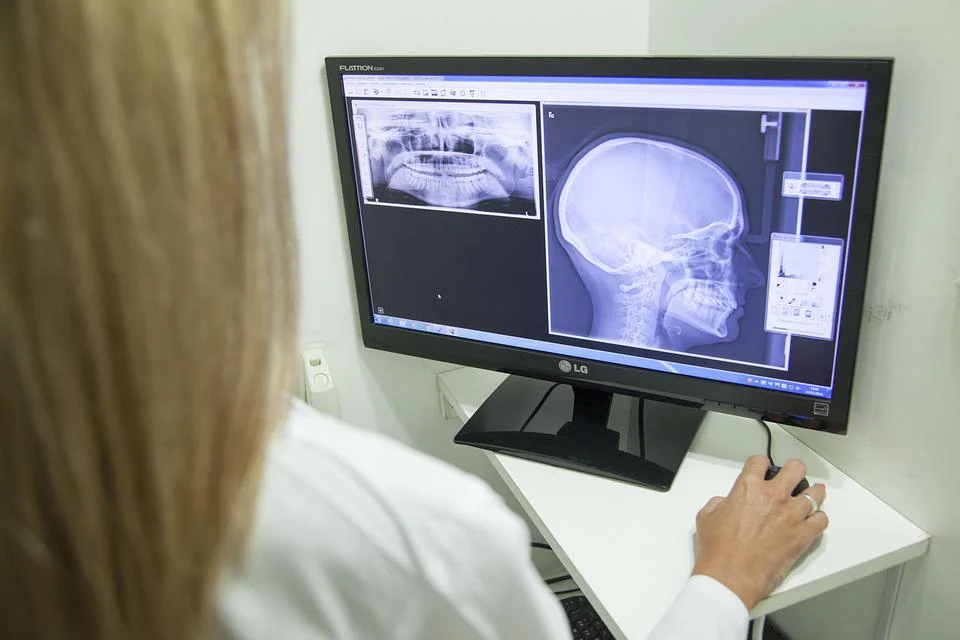
Today, radiologic technology is one of the most sought-after occupations that is gaining in popularity.
X-ray Technicians are also known as Radiologic Technicians, and they become specialists in the health care system through education.
They are engaged in imaging parts of the human body and based on these images, medical problems are diagnosed and treatment methods are easier to find.
According to the U.S. Bureau of Labor Statistics, the average annual salary of a radiology technician is $60,000.
Therefore, it is very worthwhile to invest in education in the field of radiological technology.
Depending on what you actually want in your career, you have a couple of options.
You can complete a certification program (12 to 24 months), earn a two-year associate’s degree, or a four-year bachelor’s degree.
As a convenience to candidates, many educational institutions offer flexible accommodation for those who work and study at the same time.
One thing that is wise to check before enrolling in one of the programs is whether your school is accredited by the point Review Committee on Education in Radiologic Technology (JRCERT).
This is important due to the fact that only graduates with JRCERT accreditation are eligible for registration with ARRT.
And an ARRT certificate is one of the conditions that a candidate must have with most employers.
Table of Contents
Average Costs
The cost of attending X-Ray Technician schools depends on the type and location of the school as well as whether you are a resident or a non-resident.
The average amount of the certification program is between $6,000 and $20,000.
These programs are both the fastest and cheapest way to become an X-ray technician and are usually conducted by medical institutions and technical schools.
For example, Mt. San Antonio College runs a Computed Tomography certification program and charges $782 for residents, and $5,678 for non-residents.
The tuition fee for the Mammography certificate is $690 for residents and $5,010 for non-residents.
If you still want to have an associate’s degree, it will cost between $4,000 and $30,000.
One such program is implemented by the School of Radiologic Technology at Mercy Hospital.
The tuition fee is $21,500 and includes registration fees, books, uniforms, seminars, and trajecsys fees.
Also, Clarkson College offers an Associate of Science in Radiography for $7,590 per semester (full time-12 hours), while part-time tuition is $3,795 per semester.
The amount of tuition you will have to pay if you want a Bachelor’s degree is between $15,000 and $43,000.
For example, the Bachelor of Science in Medical Imaging Technology degree program at Indiana University South Bend is designed to provide students with a higher level of expertise in the field of medical imaging that includes Computed Axial Tomography (CT).
The annual tuition for this program is $19,346.
The annual tuition for the bachelor’s degree in Medical Imaging at the Department of Medical Imaging at Washington Adventist University is $23,400.
Additional Costs
Books and supplies can cost up to $1,200 a year.
Room and board costs should also be taken into account, and between $7,000 and $15,000 per year should be set aside.
Of course, the average cost of housing will be considerably higher if you are a student outside of your state.
The most affordable housing is mostly offered by public institutions.
In contrast, private nonprofits have the highest fees for campus accommodation.
Discounts
Quite a number of institutions and organizations offer scholarships that can greatly help students obtain the desired degree.
For example, the Sam Kotonias Memorial X-Ray Scholarship is a diagnostic imaging scholarship that can be awarded to students in Minnesota.
The amount of the scholarship is $1,000.
Also, the Bob Cassling Memorial Scholarship awards two scholarships of $4,000.
In addition to these, there are many other scholarships for X-ray technicians.
Most colleges and universities offer their scholarships and publish detailed information on their websites.









